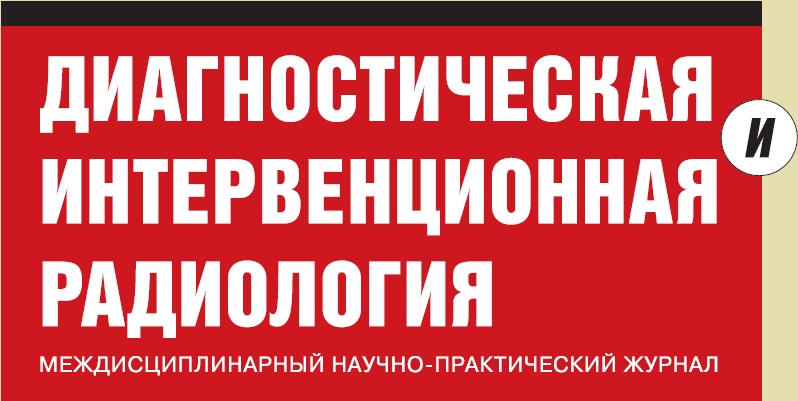Аннотация: Стеноз почечной артерии - распространенная патология, которая может привести к развитию вазоренальной гипертензии или ишемической нефропатии. Стентирование почечных артерий в настоящее время получило широкое распространение, и количество таких вмешательств растет с каждым годом. Однако клиническая эффективность реваскуляризации почек остается недоказанной. При этом, по мнению большинства исследователей, результаты стентирования могут быть улучшены. В качестве возможных путей улучшения клинических результатов стентирования в настоящее время рассматриваются оценка гемодинамических параметров стеноза и жизнеспособности паренхимы почки, профилактика эмболий и рестенозов почечной артерии после стентирования. В статье приведен обзор исследований, направленных на изучение методов улучшения отдаленных результатов стентирования почечных артерий. Список литературы 1. Wheatley K., Phil D., Ives N. Revascularization versus medical therapy for renal-artery stenosis. N. Engl. J. Med. 2009; 36: 1953 - 62. 2. Textor S. Despite results from ASTRAL, jury still out on stenting for atherosclerotic renal artery stenosis. Nephrology. Times .2010; 3: 2-7. 3. Kapoor N., Fahsah I., Karim R et al. Physiological assessment of renal artery stenosis: comparisons of resting with hyperemic renal pressure measurements. Catheter. Cardiovasc. Interv. 2010; 76(5): 726-32. 4. Rundback J.H., Sacks D., Kent K.C., et al. Guidelines for the reporting of renal artery revascularization in clinical trials. American Heart Association. Circulation. 2002; 106: 1572-1585. 5. Jones N., Bates E., Chetcuti S. Usefulness of tran- slesional pressure gradient and pharmacological provocation for the assessment of intermediate renal artery disease. Catheter. Cardiovasc. Interv. 2006; 68(3): 429-34. 6. Mitchell J., Subramanian R., White C. et al. Predicting blood pressure improvement in hypertensive patients after renal artery stent placement: renal fractional flow reserve. Catheter. Cardiovasc. Interv. 2007; 69(5):685-9. 7. Kadziela J., Witkowski A., Januszewicz A. Assessment of renal artery stenosis using both resting pressures ratio and fractional flow reserve: relationship to angiography and ultrasonography. BloodPress. 2011; 20(4): 211-7. 8. Drieghe B., Madaric J., Sarno G. et al. Assessment of renal artery stenosis: side-by-side comparison of angiography and duplex ultrasound with pressure gradient measurements. European. Heart. Journal. 2007; 29 (4): 517-24. 9. Subramanian R., White C.J., Rosenfield K. et al. Renal fractional flow reserve: a hemodynamic evaluation of moderate renal artery stenoses. Catheter. Cardiovasc. Interv. 2005; 64: 480-486. 10. Leesar M., Varma J., Shapira A. Prediction of hypertension improvement after stenting of renal artery stenosis: comparative accuracy of translesional pressure gradients, intravascular ultrasound, and angiography. J. Am. Coll. Cardiol. 2009; 53(25): 2363-71. 11. Radermacher J., Chavan A., Bleck J. et al. Use of Doppler ultrasonography to predict the outcome of therapy for renal-artery stenosis. N. Engl. J. Med. 2001; 344: 410-417. 12. Doi Y., Iwashima Y., Yoshihara F. Et al. Renal resistive index and cardiovascular and renal outcomes in essential hypertension. Hypertension. 2012; Jul 23. Epub ahead of print. 13. Zeller T., Ulrich F., Mflller C., Bbrgelin K., Sinn L. Angioplasty of severe atherosclerotic ostial renal artery stenosis: predictors of improved renal function after percutaneous stent-supported intervention. Circulation 2003; 108: 2244-2249. 14. Liew Y., Bartholomew J. Atheromatous embolization. hsc. Med. 2005; 10: 309-326. 15. Holden A. Is there an indication for embolic protection in renal artery intervention? Tech. Vasc. Interv. Radiol. 2011; 14(2): 95-100. 16. Rocha-Singh K., Eisenhauer A.,Textor S. Atherosclerotic peripheral vascular disease symposium II: intervention for renal artery disease. Circulation. 2008; 118: 2873-2878. 17. Feldman R., Wargovich T., Bittl J. No-touch technique for reducing aortic wall trauma during renal artery stenting. Catheter. Cardiovasc. Interv. 1999; 46(2): 245-8. 18. Kolluri R., Goldstein J., Rocha-Singh K. Percutaneous vascular interventions in renal artery diseases. Minerva. Cardioangiol. 2006; 54: 95-107. 19. Hiramoto J., Hansen K., Pan X. Atheroemboli during renal artery angioplasty: an ex vivo study. J. Vhsc. Surg. 2005; 41(6): 1026-30. 20. Holden A., Hill A. Renal angioplasty and stenting with distal protection of the main renal artery in ischemic nephropathy: early experience. Journal Vascular. Surgery. 2003; 38: 962-968. 21. Perkovic V., Thomson K., Mitchell P. et al. Treatment of renovascular disease with percutaneous stent insertion: long-term outcomes. Austral. Radiol. 2001; 45: 438-43. 22. Paulsen D., Klow N., Rogstad B. et al. Preservation of renal function by percutaneous transluminal angioplasty in ischaemic renal disease. Nephrol. Dial Transplant. 1999; 14: 1454-61. 23. Leertouwer T., Gussenhoven E., Bosch J. et al. Stent placement for renal arterial stenosis: where do we stand? A meta-analysis. Radiology. 2000; 216: 78-85. 24. Vignali C., Bargellini I., Lazzereschi M. et al. Predictive factors of in-stent restenosis in renal artery stenting: a retrospective analysis. Cardiovasc. Intervent. Radiol. 2005; 28: 296-302. 25. Corriere M., Edwards M., Pearce J. et al. Restenosis after renal artery angioplasty and stenting: incidence and risk factors. J. Vasc. Surg. 2009; 50(4): 813-819. 26. Leertouwer T., Gussenhoven E., van Overhagen H. et al. Stent placement for treatment of renal artery stenosis guided by intravascular ultrasound. J. Vasc. Interv. Radiol. 1998; 9: 945-952. 27. Zeller T., Rastan A., Rothenpieler U. et al. Restenosis after stenting of atherosclerotic renal artery stenosis: is there a rationale for the use of drug-eluting stents? Catheter. Cardiovasc. Interv. 2006; 68(1): 125-30. 28. Sapoval M., Zghringer M., Pattynama P. et al. Low- profile stent system for treatment of atherosclerotic renal artery stenosis: the GREAT trial. J. Vasc. Intern Radiol. 2005; 16(9): 1195-202. 29. Wohrle J., Kochs M., Vollmer C. et al. Re-angioplasty of in-stent restenosis versus balloon restenosis: a matched pair comparison. Int. J. Cardiol. 2004; 93: 257-262.

Сайт предназначен для врачей








